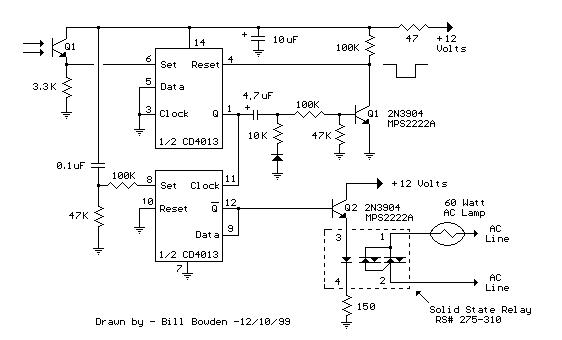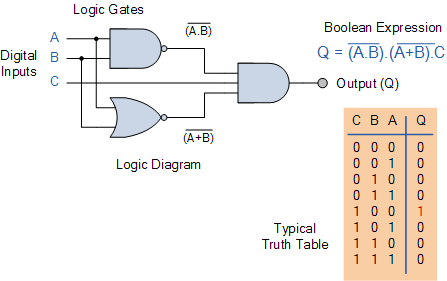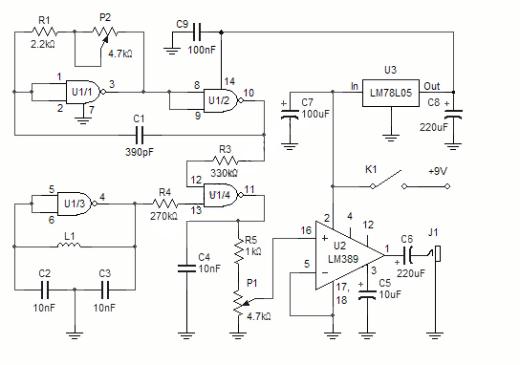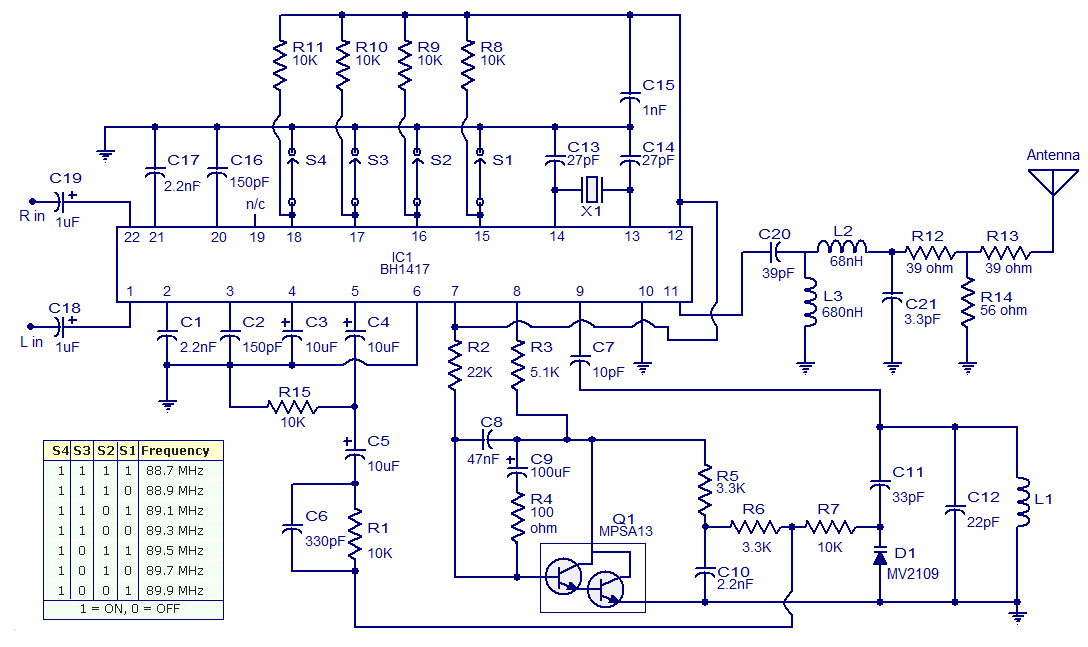
EL Lamp Driver Using HV832MG
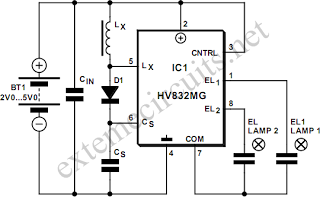
An EL lamp is a solid-state, low-power, uniform area light source. Due to its thin profile (as thin as 0.3 mm) and its capability to be manufactured in various sizes and shapes, EL lamps serve as an ideal solution for backlighting LCD displays, membrane keypads, and numerous other applications. Electroluminescent (EL) lamps provide significant advantages over point light sources such as LEDs, incandescent, and fluorescent lighting systems, leading to their increasing adoption. Many manufacturers of wireless phones and pagers are transitioning to EL lighting systems for keypads and displays. A typical lamp consists of light-emitting phosphor sandwiched between two conductive electrodes, with one electrode being transparent to allow light to escape. When an AC voltage is applied to the electrodes, the electrical field causes the phosphor to rapidly charge and discharge, resulting in light emission during each cycle. The brightness of EL lamps can generally be controlled by varying the operating voltage, as the number of light pulses depends on the magnitude of the applied voltage. EL lamps exhibit a capacitance of approximately 2.5 nF to 3.5 nF per square inch. When a high voltage is applied across the electrodes, the resulting electric field excites the phosphor atoms to a higher energy state. When the electric field is removed, the atoms return to a lower energy state, emitting photons in the process. The wavelength of the emitted light is determined by the type of phosphor used and the frequency of the excitation voltage. Most phosphors tend to emit light that shifts towards blue with an increase in excitation frequency. Color control is typically achieved by selecting the phosphor type, adding fluorescent dyes in the phosphor layer, using a color filter over the lamp, or a combination of these methods. EL lamp brightness increases approximately with the square of the applied voltage. Increasing frequency, in addition to affecting hue, will also enhance lamp brightness, with a nearly linear relationship. Most manufacturers provide graphs depicting these relationships for various types of lamps. Excitation voltages usually range from 60 VPP to 200 VPP at 60 Hz to 1 kHz. However, increased voltage and/or frequency can adversely affect lamp life, with higher frequencies generally having a more significant impact. Unlike other types of light sources, EL lamps do not fail abruptly; instead, their brightness gradually diminishes over time. For intermittent use, lamp life is rarely a concern. For instance, if a lamp is used for 20 minutes daily, over a span of ten years, it will be activated for a total of 1,216 hours, which is well within the useful life of most EL lamps. When designing a drive circuit, it is essential to balance lamp brightness, hue, useful life, and supply current consumption. Dedicated ICs like the Supertex HV832MG are employed to generate the high voltages required for driving EL lamps, utilizing switch-mode converters with inductive flyback. By integrating high-voltage transistors on-chip, this driver eliminates the need for costly, bulky, and noisy transformers to generate high output voltages. The HV832MG features open-loop conversion and incorporates a lamp drive oscillator that is separate from the power conversion oscillator, allowing for independent setting of lamp drive frequency and power conversion frequency to optimize overall performance. The power conversion cycle commences when a MOSFET switch within the HV832MG is activated, causing current to rise in inductor Lx. When the switch is deactivated, inductive flyback causes the voltage across the inductor to reverse polarity and increase until it reaches the level of the storage capacitor CS (plus diode drop), at which point the rectifier conducts, transferring energy from the inductor’s magnetic field to CS. Once all inductor energy is transferred and the inductor current drops to zero, the rectifier ceases conduction, and the inductor voltage returns to zero, preparing for the next cycle. Output power is calculated as the amount of energy transferred per cycle multiplied by the number of cycles per second. It is crucial to select the inductor and conversion frequency to provide the required output voltage while ensuring that the inductor current does not approach saturation levels. If saturation occurs, excessive current may flow, potentially leading to device failure. Ideally, the inductor current should return to zero between cycles; failing to do so will require a higher average current to meet output power requirements, increasing I²R losses and decreasing conversion efficiency. Conversely, allowing excessive time between zero inductor current and the start of the next cycle will necessitate more energy transfer each cycle to maintain output power, risking inductor saturation and increasing I²R and core losses. The circuit provides an output of 130 volts at a frequency range of 300-450 Hz, drawing only 30 mA of current, yet capable of driving EL lamps with a surface area of up to 9 cm². This design exhibits excellent drive capability and provides a symmetrical bipolar drive, resulting in a zero-bias signal, which many lamp manufacturers recommend to avoid potential migration issues and enhance lamp life. The supply voltage should be bypassed with a capacitor located close to the lamp driver, with values ranging from 0.1 µF to 1 µF depending on supply impedance. For larger lamps requiring higher capacitances, a FET follower circuit may be employed to boost the output drive capability of the lamp driver. The HV832MG is available from Supertex Semiconductors, USA.An EL lamp is a solid state, low power, uniform area light source. Because of its thin pro ¬le (as thin as 0. 3 mm) and the fact that it can be built into almost any size and shape, EL lamps are an ideal way to provide back-lighting for LCD displays, membrane keypads and a variety of other applications. Electroluminescent (EL) lamps offer signific ant advantages over point light sources such as LEDs, incandescent, and ¬‚uorescent lighting systems. As a result of these advantages, EL lamps are seeing growing use. Many wireless phone and pager manufacturers are converting to EL lighting systems in keypads and displays.
The typical lamp consists of light emitting phosphor sandwiched between two conductive electrodes with one of the electrodes transparent so allowing light to escape. As an AC voltage is applied to the electrodes, the electrical ¬eld causes the phosphor to rapidly charge and discharge, resulting in the emission of light during each cycle.
Since the number of light pulses depends on the magnitude of the applied voltage, the brightness of EL lamps can generally be controlled by varying the operating voltage. Because EL lamps are a laminate, they exhibit a capacitance of the order of 2. 5 nF to 3. 5 nF per square inch. When high voltage is applied across the electrodes, the resulting electric ¬eld excites the phosphor atoms to a higher energy state.
When the electric ¬eld is removed, the atoms fall back to a lower energy state, emitting photons in the process. The wavelength of the emitted light is determined by the type of phosphor used and the frequency of the excitation voltage.
With most phosphors, the spectrum of emitted light will tend to shift towards blue with an increase in excitation frequency. Color is usually controlled, however, by selecting the phosphor type, by adding fluorescent dyes in the phosphor layer, through the use of a color filter over the lamp, or a combination of these.
EL lamp brightness increases approximately with the square of applied voltage. Increasing frequency, in addition to affecting hue, will also increase lamp brightness, but with a nearly linear relationship. Most lamp manufacturers publish graphs depicting these relationships for various types of lamps. Excitation voltages usually range from 60 VPP to 200 VPP at 60 Hz to 1 kHz. Increased voltage and/or frequency, however, adversely affects lamp life, with higher frequencies generally decreasing lamp life more than increased voltage.
EL lamps, unlike other types of light sources, do not fail abruptly. Instead, their brightness gradually decreases through use. For intermittent use, lamp life is seldom a concern. For example, if a lamp is used 20 minutes per day, over the course of 10 years the lamp will be activated for a total of 1, 216 hours, well within the useful life of almost any EL lamp available. When designing a drive circuit, a balance needs to be struck between lamp brightness, hue, useful life, and supply current consumption.
To generate the high voltages needed for driving EL lamps, dedicated ICs like the Supertex HV832MG employ switch-mode converters using inductive ¬‚yback. By integrating high voltage transistors on-chip, this driver avoids the need for expensive, bulky, and noisy transformers to generate high output voltages.
The HV832MG employs open-loop conversion. This EL driver incorporates a lamp drive oscillator that is separate from the power conversion oscillator. This allows setting lamp drive frequency independently from the power conversion frequency and so optimize overall performance.
The power conversion cycle begins when a MOSFET switch in the HV832MG is turned on and current begins to rise in inductor Lx. When the switch is turned off, inductive ¬‚yback causes the voltage across the inductor to reverse polarity and rise until it reaches the level of the storage capacitor CS, (plus diode drop) at which point the rectifier conducts and the energy contained in the magnetic ¬eld of the inductor is transferred to CS.
When all the inductor energy is transferred and inductor current drops to zero, the rectifier stops conducting and inductor voltage drops to zero, ready for the next cycle. Output power is simply the amount of energy transferred per cycle multiplied by the number of cycles per second.
It is important to select the inductor and conversion frequency to provide the required output voltage while assuring that the inductor current does not approach saturation levels. If the inductor saturates, excessive current will flow, potentially leading to device failure. Ideally, the inductor current should be allowed to return to zero between cycles. If inductor current is not allowed to return to zero, a higher average current will be needed to meet output power requirements, increasing I2R losses, and decreasing conversion efficiency.
On he other hand, if too much time is allowed between zero inductor current and the start of the next cycle, more energy will need to be transferred each cycle to maintain output power, thus risking inductor saturation and increasing I2R and core losses. This circuit provides an output of 130 volts at 300-450 Hz, draws just 30mA current, yet is capable of driving EL lamps with a surface area of up to 9 cm2.
This design has excellent drive capability and provides a symmetrical bipolar drive, resulting in a zero-bias signal. Many lamp manufacturers recommend a zero-bias drive signal to avoid potential migration problems and increase lamp life.
The supply voltage should be bypassed with a capacitor located close to the lamp driver. Values can range from 0. 1 µF to 1 µF depending on supply impedance. For very large lamps representing much larger capacitances, a FET follower circuit may be employed to boost the output drive capability of the lamp driver. The HV832MG may be obtained from Supertex Semiconductors, USA, 🔗 External reference
The typical lamp consists of light emitting phosphor sandwiched between two conductive electrodes with one of the electrodes transparent so allowing light to escape. As an AC voltage is applied to the electrodes, the electrical ¬eld causes the phosphor to rapidly charge and discharge, resulting in the emission of light during each cycle.
Since the number of light pulses depends on the magnitude of the applied voltage, the brightness of EL lamps can generally be controlled by varying the operating voltage. Because EL lamps are a laminate, they exhibit a capacitance of the order of 2. 5 nF to 3. 5 nF per square inch. When high voltage is applied across the electrodes, the resulting electric ¬eld excites the phosphor atoms to a higher energy state.
When the electric ¬eld is removed, the atoms fall back to a lower energy state, emitting photons in the process. The wavelength of the emitted light is determined by the type of phosphor used and the frequency of the excitation voltage.
With most phosphors, the spectrum of emitted light will tend to shift towards blue with an increase in excitation frequency. Color is usually controlled, however, by selecting the phosphor type, by adding fluorescent dyes in the phosphor layer, through the use of a color filter over the lamp, or a combination of these.
EL lamp brightness increases approximately with the square of applied voltage. Increasing frequency, in addition to affecting hue, will also increase lamp brightness, but with a nearly linear relationship. Most lamp manufacturers publish graphs depicting these relationships for various types of lamps. Excitation voltages usually range from 60 VPP to 200 VPP at 60 Hz to 1 kHz. Increased voltage and/or frequency, however, adversely affects lamp life, with higher frequencies generally decreasing lamp life more than increased voltage.
EL lamps, unlike other types of light sources, do not fail abruptly. Instead, their brightness gradually decreases through use. For intermittent use, lamp life is seldom a concern. For example, if a lamp is used 20 minutes per day, over the course of 10 years the lamp will be activated for a total of 1, 216 hours, well within the useful life of almost any EL lamp available. When designing a drive circuit, a balance needs to be struck between lamp brightness, hue, useful life, and supply current consumption.
To generate the high voltages needed for driving EL lamps, dedicated ICs like the Supertex HV832MG employ switch-mode converters using inductive ¬‚yback. By integrating high voltage transistors on-chip, this driver avoids the need for expensive, bulky, and noisy transformers to generate high output voltages.
The HV832MG employs open-loop conversion. This EL driver incorporates a lamp drive oscillator that is separate from the power conversion oscillator. This allows setting lamp drive frequency independently from the power conversion frequency and so optimize overall performance.
The power conversion cycle begins when a MOSFET switch in the HV832MG is turned on and current begins to rise in inductor Lx. When the switch is turned off, inductive ¬‚yback causes the voltage across the inductor to reverse polarity and rise until it reaches the level of the storage capacitor CS, (plus diode drop) at which point the rectifier conducts and the energy contained in the magnetic ¬eld of the inductor is transferred to CS.
When all the inductor energy is transferred and inductor current drops to zero, the rectifier stops conducting and inductor voltage drops to zero, ready for the next cycle. Output power is simply the amount of energy transferred per cycle multiplied by the number of cycles per second.
It is important to select the inductor and conversion frequency to provide the required output voltage while assuring that the inductor current does not approach saturation levels. If the inductor saturates, excessive current will flow, potentially leading to device failure. Ideally, the inductor current should be allowed to return to zero between cycles. If inductor current is not allowed to return to zero, a higher average current will be needed to meet output power requirements, increasing I2R losses, and decreasing conversion efficiency.
On he other hand, if too much time is allowed between zero inductor current and the start of the next cycle, more energy will need to be transferred each cycle to maintain output power, thus risking inductor saturation and increasing I2R and core losses. This circuit provides an output of 130 volts at 300-450 Hz, draws just 30mA current, yet is capable of driving EL lamps with a surface area of up to 9 cm2.
This design has excellent drive capability and provides a symmetrical bipolar drive, resulting in a zero-bias signal. Many lamp manufacturers recommend a zero-bias drive signal to avoid potential migration problems and increase lamp life.
The supply voltage should be bypassed with a capacitor located close to the lamp driver. Values can range from 0. 1 µF to 1 µF depending on supply impedance. For very large lamps representing much larger capacitances, a FET follower circuit may be employed to boost the output drive capability of the lamp driver. The HV832MG may be obtained from Supertex Semiconductors, USA, 🔗 External reference
Warning: include(partials/cookie-banner.php): Failed to open stream: Permission denied in /var/www/html/nextgr/view-circuit.php on line 713
Warning: include(): Failed opening 'partials/cookie-banner.php' for inclusion (include_path='.:/usr/share/php') in /var/www/html/nextgr/view-circuit.php on line 713
